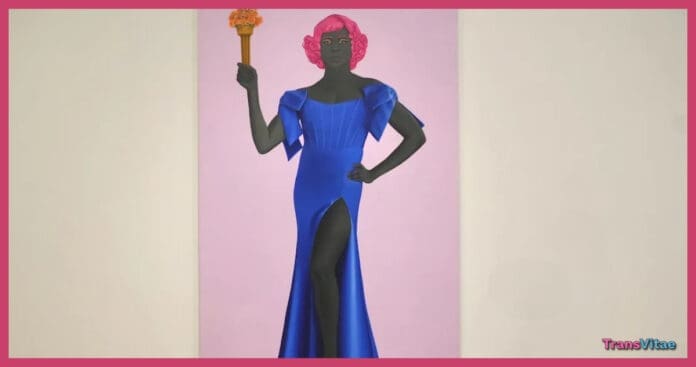Amy Sherald, the celebrated painter behind Michelle Obama’s official portrait, has canceled the Washington, D.C. stop of her touring survey American Sublime at the Smithsonian’s National Portrait Gallery (NPG), saying museum leaders floated removing or “contextualizing” a new work that depicts a transgender woman as the Statue of Liberty. The painting, Trans Forming Liberty (2024), had already appeared without incident in earlier legs of the show.
According to Sherald, Smithsonian officials, wary of political blowback, suggested swapping the painting for a video that would “explain” the work, a move she viewed as capitulation to a climate of escalating hostility toward transgender people. The Smithsonian denies it sought to remove the piece, saying it only proposed additional context. Sherald declined, calling the compromise a breach of artistic integrity and trans visibility, and withdrew the show.
The dispute unfolds against a sharpened political backdrop. Reporting indicates the Trump administration has pressured cultural institutions, including with an executive order threatening funding for exhibitions deemed out of step with “shared American values.” A White House spokesperson criticized Sherald’s portrait as conflicting with Liberty’s symbolism, while the administration’s broader efforts to reshape the Smithsonian included attacks on NPG director Kim Sajet.
For transgender communities and their allies, the stakes are bigger than one wall label. When institutions ask queer and trans artists, or artists who depict us, to dilute or “contextualize” our existence, it signals that our presence is negotiable, contingent, or too politically risky to stand on its own. Sherald’s refusal underscores a principle many LGBTQ+ advocates know intimately: visibility that depends on someone else’s comfort isn’t visibility at all.
The cancellation also erases a milestone moment. Sherald would have been the first Black contemporary artist to mount a solo show at the NPG, a symbolic step forward for an institution that helped launch her national prominence after her Obama portrait. Instead, American Sublime, critically acclaimed in San Francisco and New York, will not complete its planned run in the nation’s capital (Sept. 19, 2025–Feb. 22, 2026), a loss for audiences who deserve to see the work unedited.
The Smithsonian says it sought dialogue, not censorship. But intent matters less than impact when the “compromise” disproportionately lands on the visibility of an already targeted group. If the price of federal funding is that trans bodies and stories must be footnoted, softened, or relocated to “contextual” side rooms, that’s not neutrality; it’s structural bias with a friendly face.
Sherald’s decision is a line in the sand, and it won’t be the last. As political actors train their sights on museums, libraries, and classrooms, cultural leaders will have to choose: defend artists, especially those representing marginalized communities, or let fear of power determine what the public is allowed to see. Trans people deserve more than a disclaimer. They deserve the wall.


